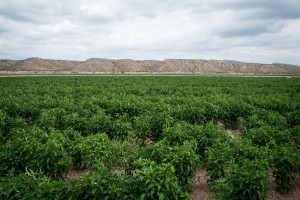Despite some hilariously complex argument over the accounting details, there finally is enough water in Elephant Butte Reservoir on the Rio Grande that everybody agrees it’s now legal for the middle Rio Grande’s farm water agency to store some water behind upstream dams to help stretch out this summer’s irrigation season.
The runoff forecast is still lousy, but the flexibility allowed by the storage lessens the pressure on the Middle Rio Grande Conservancy District, which delivers farm water to some 60,000-ish acres in a narrow strip along the river valley through central New Mexico.
Here’s some back story on Article VII of the Rio Grande Compact, but basically it was written into the interstate water deal to ensure that in dry years, Colorado and New Mexico didn’t hog a lot of water. If there’s less than 400,000 acre feet of complicatedly bureaucratically described water of a certain type in Elephant Butte, upstream folks can’t store, except when they can kinda sorta under certain narrow conditions (did I mention hilariously complex arguments over accounting details?). That makes farm water management substantially harder, because one of its basic principles involves storing some of the water during the spring runoff peak to use in the summer when the rivers get dry.

New Mexico’s Hatch chile, seen here last August, will get their first Rio Grande irrigation water beginning May 11.
Sometime in early April (somewhere between April 3 and April 9, depending on who you ask, see “hilariously complicated accounting”) we came out of Article VII and the Middle Rio Grande Conservancy District was allowed to begin storing water for its farmers’ summer use.
I’m pretty sure this is the first time we’ve been out of Article VII storage restrictions since July of 2010.
The forecast is still lousy. Elephant Butte Irrigation District managers, at a farmer meeting in Hatch this morning, announced that they’ll begin a small early release for the Hatch Valley vegetable farmers on May 11, with a full release beginning May 28 that will wet the river and begin moving down the canals through the Mesilla Valley in southern New Mexico. (Prior to 2013, EBID had never had an irrigation season start later than March. 2013, ’14, and ’15: May.)
